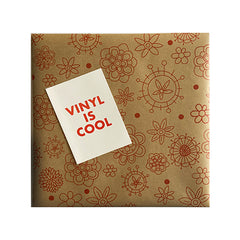





Few Traces
Few Traces surveys a near decade of Mark Renner’s scarcely released and unreleased material from 1982 to 1990, embracing and evoking the timelessness of his artistic statement: a wordless translation of the individual’s musical experience, met with the poetic expression of being here.
Mark Renner first encountered punk while a teenager in Upperco, a country town in rural Maryland. Growing up on his family farm, he became a young acolyte of the British exports hitting not-so-distant Baltimore record store shelves in 1979 / 1980 and was baited by an area musician-wanted ad declaring Ultravox a primary touchstone.
This nascent band and a pair of other group experiments flamed out under the typical totem of despotism. In their ashes Renner began recording independently around 1983 with a portable four-track, electric guitar, and classic Casio CZ101 synthesizer. Aside from John Foxx-era Ultravox, Renner’s process was inspired by the period’s electronic pioneers venturing into deeper, romantic pop pastures: Yellow Magic Orchestra, Bill Nelson, The Associates.
With his tools and teachers in place, the blueprints for Renner’s sound were laid out – metronomic, skeletal rhythms built on sturdy yet singular drum machines supporting luminescent guitar and synth lines, Renner’s reverent voice guiding the fables and construction.
Apart from his writing, Renner explored music as a complement to visual language: many of the dream-like instrumental passages presented across Few Traces were originally implemented as sound elements for exhibitions of his paintings. Renner pursued wordless music as a pure aesthetic in its own right, pristinely balanced segues and open-ended compositions that lead to pasture but not without shepherd.
Mark Renner first encountered punk while a teenager in Upperco, a country town in rural Maryland. Growing up on his family farm, he became a young acolyte of the British exports hitting not-so-distant Baltimore record store shelves in 1979 / 1980 and was baited by an area musician-wanted ad declaring Ultravox a primary touchstone.
This nascent band and a pair of other group experiments flamed out under the typical totem of despotism. In their ashes Renner began recording independently around 1983 with a portable four-track, electric guitar, and classic Casio CZ101 synthesizer. Aside from John Foxx-era Ultravox, Renner’s process was inspired by the period’s electronic pioneers venturing into deeper, romantic pop pastures: Yellow Magic Orchestra, Bill Nelson, The Associates.
With his tools and teachers in place, the blueprints for Renner’s sound were laid out – metronomic, skeletal rhythms built on sturdy yet singular drum machines supporting luminescent guitar and synth lines, Renner’s reverent voice guiding the fables and construction.
Apart from his writing, Renner explored music as a complement to visual language: many of the dream-like instrumental passages presented across Few Traces were originally implemented as sound elements for exhibitions of his paintings. Renner pursued wordless music as a pure aesthetic in its own right, pristinely balanced segues and open-ended compositions that lead to pasture but not without shepherd.
Tracklisting
1. Riverside
2. Saints and Sages
3. Few Traces
4. Half A Heart
5. Princes Street
6. The Mirror At Saint Andrews
7. The Wild House
8. The Dyer's Hand
9. A Fountain In The Cloister
10. James Cowie (The Portrait Group)
11. Autumn Calls You By Name
12. Ageless
13. Jars of Clay
14. More Or Less
15. The Eternal Purpose
16. The Sun In His Head, A Storm In His Heart
17. The Man & The Echo
18. As Big As Trees
19. Yeats, and the Golden Dawn
20. It Might Have Been
21. Wounds
- Related products
- Recently viewed




